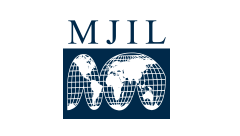Abstract
This Comment examines, through principles of public international law and U.S. jurisprudence, the relationship between U.S. courts and the ICJ to determine if the former are indeed bound by the latter's decisions, proprio motu, or if instead some Executive action is required to make the decisions binding on the judiciary. Part of this examination will entail a discussion of the potential for dialogue between the ICJ and U.S. courts to "pierce the veil of sovereignty" that traditionally conceals the inner workings of sovereign states from the scrutiny of international tribunals. Based on this assessment, the Comment then addresses how U.S. courts may approach the requirements of Avena and LaGrand in light of the Supreme Court's refusal to specifically address the effect of those decisions in lower courts.
Recommended Citation
Aaron A. Ostrovsky & Brandon E. Reavis,
Rebus Sic Stantibus: Notification of Consular Rights After Medellin,
27
Mich. J. Int'l L.
657
(2006).
Available at:
https://repository.law.umich.edu/mjil/vol27/iss2/6
Included in
International Law Commons, Rule of Law Commons, Supreme Court of the United States Commons

